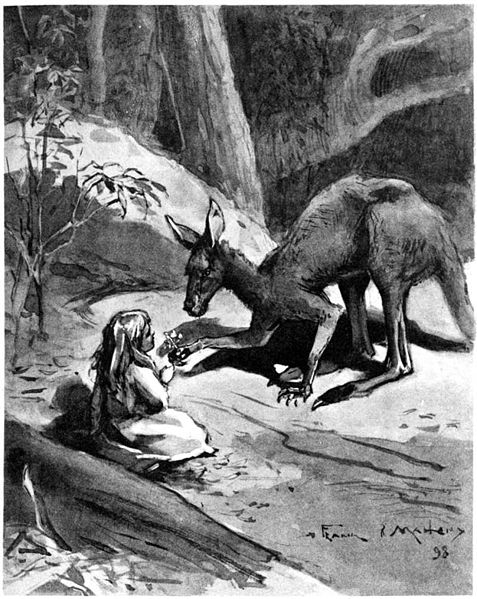
In 1899, Ethel C. Pedley’s “Dot and the Kangaroo” told the story of a little girl named Dot who wanders off into the Australian bush. She is befriended by a mother kangaroo who feeds Dot special berries that allow her to understand the animals in the bush. Throughout the story, she goes from one encounter to another; she is offered gum leaves by a koala, asks a platypus about his bizarre nature as an egg-laying mammal, and rides around in the kangaroo’s pouch. This was written at a time when Australia’s unique fauna was seen mainly as something to hunt for food or for sport. Or if you were a fur-trapper, hunting was a profitable business. For years, Australian colonists weren’t exactly kind to their marsupial neighbors; the introduction of rabbits to hunt nearly ate kangaroos off their land. Koala populations dwindled thanks to the fur trade. Reading it, I felt like Pedley wrote this as a cry to Australia to take better care of their animal friends, and realize how special each creature was. The story, despite its whimsical feel, is filled with plenty of negative criticism aimed squarely at negative human interference in the wild. Pedley’s preface to her story is as follows:
To the children of Australia
in the hope of enlisting their sympathies
for the many beautiful, amiable, and frolicsome creatures of their fair land,
whose extinctions, through ruthless destruction,
is being surely accomplished.
These sentiments are expressed through the kangaroo that has her own prejudice towards humans; a mother who has lost her own joey, and bears a disdain towards humans. However, as she takes on the role of the surrogate mother towards the lonely Dot, the Kangaroo learns that not all humans are bad. Humans are also, however, expressed through two different perspectives; from the vantage of the white settler who sees nature as an obstacle in the way of progress and profit, and the Aborigines who have a spiritual connection to the land and all of its creatures. The story also introduced me to some myths that figure heavily into Aboriginal folklore. One the most infamous is the bunyip, who is a feared creature that is sort of like an Aboriginal boogeyman. It is said to lurk in swamps, billabongs, creeks and riverbeds. The word bunyip has been traced to the Wemba-Wemba or Wergaia language of Aboriginal people of South-Eastern Australia; it is usually translated as “devil” or “evil spirit”.
In short, it is one of the most entertaining, if not touching stories that really puts a face on both Australian literature and Australian wildlife. It tells a story about animals and the environment, and it does so without getting too preachy. In addition, the relationship between little Dot and her furry surrogate mother is just heartwarming; who doesn’t find the image of a little girl riding in a kangaroo pouch adorable?
In 1977, “Dot and the Kangaroo” was adapted into a film that combined animation and live action. It was produced and directed by Australian animator Yoram Gross, and featured a series of memorable songs. It is considered to be a landmark Australian film, with its use of authentic accents, icons, and references. The film, however, did alter a few scenes from the book, including the ending, which gave the film a rather bitersweet finish.


